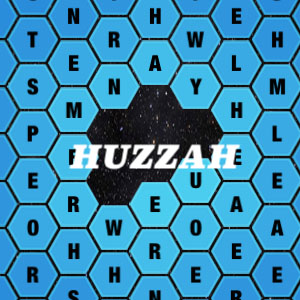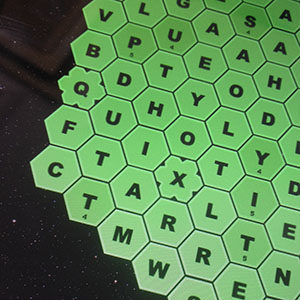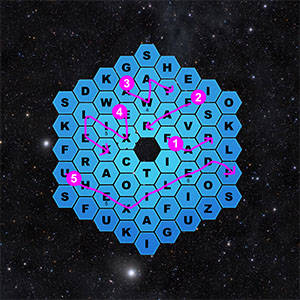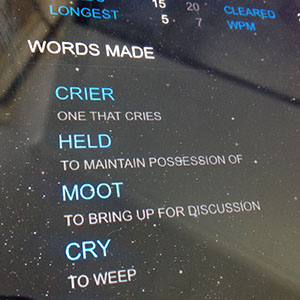
In early April 2014, Quentin Zervaas and I began our first attempt at making an iOS game — Hexiled. Quentin is a mobile app developer and I am a web designer/developer. Before Hexiled, neither of us had made a game. In case it's useful to any other developers, or of interest to those playing the game, here's the story.
Get Hexiled from the App Store on iPhone, iPad and iPod touch now in English, French, Spanish, Portuguese, German, Italian and Dutch.
Mid-April was the Easter long weekend and I had the then-Fractured demo on my iPad to share with my brother and a few friends. The game had a time limit and proved interesting and challenging enough that the iPad barely sat still as a few of us took turns in tackling the game. Memorably at that point, a successful escape finished with "Huzzah".

I was confident from the very first sketch and more so in the first playthroughs, but when our friend Ben said "I only stopped playing because the battery ran out," that confidence doubled. Quentin meanwhile wondered if the battery ran out because his programming work had issues...
At that point, Escape games started with 90 seconds and the aim was to finish with as much time on the clock as possible. We had wondered about introducing badges or medals based on the time remaining.
That weekend, it didn't take long to see that one time limit could prove both too easy for word game pros and far too difficult for a newcomer. As a result, the following week we discussed and implemented dynamic timing that based the beginning time limit on recent performance and also a measure of how close a player got to the edge in case of failure. Fall just short and you were granted a little bit more time, but miss by miles and you were likely to gain more.

With a bit of tweaking, this proved effective. A rookie failing for the first time would, by virtue of gradual improvement and more time, get closer and closer to success. Meanwhile, a pro would find their Escape streak challenged by generally shorter and shorter game times. The same game mode can now enable frantic forays by anyone to breach the edge of play as time runs out.
The week after Easter saw the first mention of "Hexiled" in the design files. Tom and I had spoken of the game's "voice" as being one of isolation and almost without any human influence other than that of the player. The game board would be static ice with only environmental sound effects while any interface would be electronic/digital.
The original name of Fractured had been used by another game so we shortlisted alternatives that included Hexscape, Hexspace, Hexistence and Hexiled. Ultimately that match between the hexagons and exile won out and Hexiled branding entered the game.

Early on, I realised that word games usually have random letter generation, but that we could mimic a vague feeling of unique, replayable planets by seeding the randomness with a game number. This would enable players to challenge friends or replay interesting letter layouts. This concept endured in Explore mode but was ditched for Escape and Survive. One late night working, we played three simultaneous games of Escape on the same seed - it had potential, but enabling players to repeat a speed-oriented level was clearly problematic.
By late April, we'd designated J, Q, X and Z tiles as what Quentin named "hexabombs" - tiles that, when used, exploded nearby tiles also. Around that same time, we added the cratered planetary surface to the home screen and on April 30 the original tutorial concept was designed and then programmed to fit the new name.



Where by this stage the three game modes were locked in, there was a lot of bits-and-pieces work to come. On May 14, definitions. On the 16th, the secret Explore level was added. On May 21, transitions in and out of menus and a few days later, individual tile sound effects.


In early June, we created a brief to put to an amateur electronic musician and soon heard back the first examples. Read the next chapter!
Get Hexiled from the App Store on iPhone, iPad and iPod touch now in English, French, Spanish, Portuguese, German, Italian and Dutch.